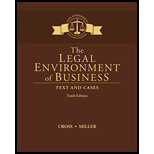
The Legal Environment of Business: Text and Cases (MindTap Course List)
10th Edition
ISBN: 9781305967304
Author: Frank B. Cross, Roger LeRoy Miller
Publisher: Cengage Learning
expand_more
expand_more
format_list_bulleted
Question
Chapter 11, Problem 6BCP
Summary Introduction
Case summary: An association W of local manufacturers of utility trade wind towers challenged the commerce department’s decision to impose only the prospective anti-dumping duties instead of the retrospective ones on the import of wind towers from China and Vietnam. However, the commerce department noticed that the association has not really gone through “material injury” or a threat from any such imports.
To find: The possibility of the assessment of anti-dumping duty, retrospectively.
Expert Solution & Answer
Want to see the full answer?
Check out a sample textbook solution
Students have asked these similar questions
distinguish between customs act, customs tariff act and eipa
The Federal Trade Commission (FTC) files suit against Yange Corp. under § 2 of the Sherman Act. To be successful,
the FTC must prove that Yange Corp. possesses monopoly power in the relevant market and that the monopoly
power was obtained by illegal means. The FTC has no direct evidence that Yange is using its power to control prices
and restrict output. The FTC, therefore, must show that Yange Corp. has monopoly power indirectly, by showing that
Yange Corp. has a dominant share of the relevant market and that there are significant barriers for new competitors
entering that market. The FTC can calculate the market share that Yange Corp. has by:
showing the total sales that Yange Corp. has ever had.
×
showing the net revenue that Yange Corp. had during their year of highest profits.
looking at the company's sales compared against the total sales of the industry within a specific
period.
taking the total sales of the industry over one year, and comparing against industry sales over prior…
Preparation
Corporate social responsibility (CSR, also called corporate conscience, corporate citizenship, or responsible business) is a form of corporate self-regulation
integrated into a business model. CSR policy functions as a self-regulatory mechanism whereby a business monitors and ensures its active compliance with the
spirit of the law, ethical standards, and national or international norms. With some models, a firm's implementation of CSR goes beyond compliance and
engages in "actions that appeár to further some social good, beyond the interests of the firm and that which is required by law." The aim is to increase long-
term profits and shareholder trust through positive public relations and high ethical standards to reduce business and legal risk by taking responsibility for
corporate actions. CSR strategies encourage the company to make a positive impact on the environment and stakeholders including consumers, employees,
investors, communities, and others.
Every year,…
Chapter 11 Solutions
The Legal Environment of Business: Text and Cases (MindTap Course List)
Knowledge Booster
Similar questions
- Which of the following cases provides guidance on how the term 'trade or commerce' should be understood as per section 18 of the Australian Consumer Law (ACL)? Group of answer choices Taco Co of Australia v Taco Bell Ltd (1982) Concrete Constructions (NSW) Pty Ltd v Nelson (1990) Procter & Gamble Australia Pty Ltd v Energizer Pty Ltd [2011] Henjo Investments Pty Ltd v Collins Marrickville Pty Ltd (No1) (1988) Note:- Do not provide handwritten solution. Maintain accuracy and quality in your answer. Take care of plagiarism. Answer completely. You will get up vote for sure.arrow_forwardA) Under what circumstances might a court have committed the cellophane fallacy? B) In the Google Shopping case, Google was found to have abused its dominant position under Art 102 TFEU. On what grounds did the courts find Google guilty?C) In the Microsoft case, Microsoft was found to have committed an offence under 102 TFEU. What was the offence, and why is it a problem for Microsoft and not for other competitors.D) Suppose a firm can produce for a marginal cost of 2 and receive a price of 4. What would the elasticity of demand for its product be?arrow_forwardExplain the purpose of developing an OHS policy.arrow_forward
- Company A appoints Company B as its exclusive agent to distribute its products in a specific territory. Company B adopts restrictive practices, preventing other potential distributors from entering the market. Discuss how agency law principles apply to the relationship between Company A and Company B, and analyze the potential antitrust implications of Company B's actions under relevant antitrust laws."arrow_forwardthe major federal legislation in Canada that defines illegal practices, including price fixing, bid rigging, price discrimination, predatory pricing, double ticketing, resale price maintenance, bait and switch selling, and pyramid selling occurs when false or deceptive comparisons or distorted claims are made concerning a competitor's product, services, or property comprise principle and standards that guide behaviour in the world of business may be incurred when an unfair and untrue statement is made about a competitor in writing the statement becomes actionable when it is communicated to a third party and can be interpreted as damaging the company the foundation for partnering-style relationship, product, customer, and presentation strategies an attempt to influence the person receiving the "gift"prohibits joining a competing firm for a year after they leave mutual exchange of benefits, as when a firm buys products from its customer the buyer wants to do business with an institution…arrow_forwardPlease differentiate between the Customs Act, Customs Tariff Act, and EIPAarrow_forward
- For the scenario below, determine the legality of the company's actions. Ioncorp sells cabinets nationwide to the furniture company Blinkorp. It makes an agreement that Blinkorp will only sell Ioncorp cabinets in its warehouses. Strictly illegal Legal Illegal, depending on impactarrow_forwardSection 139, Disaster Relief Payment, was enacted by Congress in 2001 to ensure that victims of a qualified disaster would not be required to include in gross income payments received for funeral expenses resulting from a terrorist attack. True Falsearrow_forwardPlease provide original answers for the following questions: The competent governing body of the International Body Building Federation imposes a suspension against a Bahamian Athlete for having committed an anti-doping rule violation. The Bahamian Athlete challenges this sanction before the Court of Arbitration for Sport (CAS). The International Body Building Federation is of the view that the power of the CAS panel to review the sanction is limited and that the sanction can only be challenged if it is arbitrary. During the proceedings before CAS, the International Body Building Federation nominates an arbitrator (Mr. Overton) who recently made very negative public remarks about athletes from the Bahamas. In recent Instagram posts, Mr. Overton. stated that all athletes from Bahamas are "probably cheaters" and that "it is known that in the Bahamas, every athlete takes doping". The Bahamian Athlete is not successful, Mr. Overton. remains as arbitrator in this case. The CAS panel is…arrow_forward
- Kindly prepare five (5) objectives for the post of Court Administrator Administrative in the Caribbean Court of Justice, Montserrat Circuit.arrow_forwardThe Commerce Clause. Regency Transportation, Inc., operates a freight business throughout the eastern United States. Regency maintains its corporate headquarters, four warehouses, and a maintenance facility and terminal location for repairing and storing vehicles in Massachusetts. All of the vehicles in Regency’s fleet were bought in other states. Massachusetts imposes a use tax on all taxpayers subject to its jurisdiction, including those that do business in interstate commerce, as Regency does. When Massachusetts imposed the tax on the purchase price of each tractor and trailer in Regency’s fleet, the trucking firm challenged the assessment as discriminatory under the commerce clause. What is the chief consideration under the commerce clause when a state law affects interstate commerce? Is Massachusetts’s use tax valid? Explainarrow_forwardPlease answer in simple word explain , how can arbitrators effectively manage the presentation of evidence in complex commercial disputes?arrow_forward
arrow_back_ios
SEE MORE QUESTIONS
arrow_forward_ios
Recommended textbooks for you
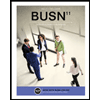 BUSN 11 Introduction to Business Student EditionBusinessISBN:9781337407137Author:KellyPublisher:Cengage Learning
BUSN 11 Introduction to Business Student EditionBusinessISBN:9781337407137Author:KellyPublisher:Cengage Learning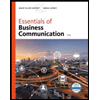 Essentials of Business Communication (MindTap Cou...BusinessISBN:9781337386494Author:Mary Ellen Guffey, Dana LoewyPublisher:Cengage Learning
Essentials of Business Communication (MindTap Cou...BusinessISBN:9781337386494Author:Mary Ellen Guffey, Dana LoewyPublisher:Cengage Learning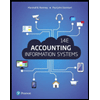 Accounting Information Systems (14th Edition)BusinessISBN:9780134474021Author:Marshall B. Romney, Paul J. SteinbartPublisher:PEARSON
Accounting Information Systems (14th Edition)BusinessISBN:9780134474021Author:Marshall B. Romney, Paul J. SteinbartPublisher:PEARSON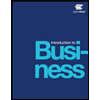
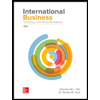 International Business: Competing in the Global M...BusinessISBN:9781259929441Author:Charles W. L. Hill Dr, G. Tomas M. HultPublisher:McGraw-Hill Education
International Business: Competing in the Global M...BusinessISBN:9781259929441Author:Charles W. L. Hill Dr, G. Tomas M. HultPublisher:McGraw-Hill Education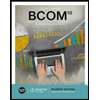

BUSN 11 Introduction to Business Student Edition
Business
ISBN:9781337407137
Author:Kelly
Publisher:Cengage Learning

Essentials of Business Communication (MindTap Cou...
Business
ISBN:9781337386494
Author:Mary Ellen Guffey, Dana Loewy
Publisher:Cengage Learning

Accounting Information Systems (14th Edition)
Business
ISBN:9780134474021
Author:Marshall B. Romney, Paul J. Steinbart
Publisher:PEARSON


International Business: Competing in the Global M...
Business
ISBN:9781259929441
Author:Charles W. L. Hill Dr, G. Tomas M. Hult
Publisher:McGraw-Hill Education
